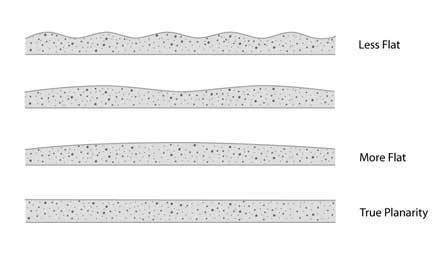Are Your Floors Flat?
Unobstructed traffic in material handling facilities and warehouses is crucial to your bottom line, to protect your equipment, increasing material handling efficiency and improving safety.
Efficient material handling starts with a flat surface and industry standards for a flat floor begin with FF, FL and F-Min. F-numbers are the standards that impact your material handling efficiency. Higher numbers give you high-efficiency, and increased safety. The converse is also true, lower F-numbers translate to low efficiency, low ROI and decreased safety.
Floorcare USA, Inc. provides services to address the F-number requirements of your facility and loading equipment and testing procedures and processes to give you verified results. This can be for existing facilities where the floor flatness has deteriorated over time or brand new facilities where the concrete did meet the intended requirements.
Our concrete leveling can be performed via mechanical means/methods including grinding, milling or resurfacing systems where we replace your cap with trowelable mortar mix or urethane modified cement resurfacer. When we are finished your floor will ride smooth and flat as intended to provide your facility with maximum material handling efficiency.
Featured Services
Concrete Floor Grinding or Resurfacing
Construction & Control Joint Surveys and Repairs
Floor Survey Evaluations
What are the F-Number Systems and what do they mean?

